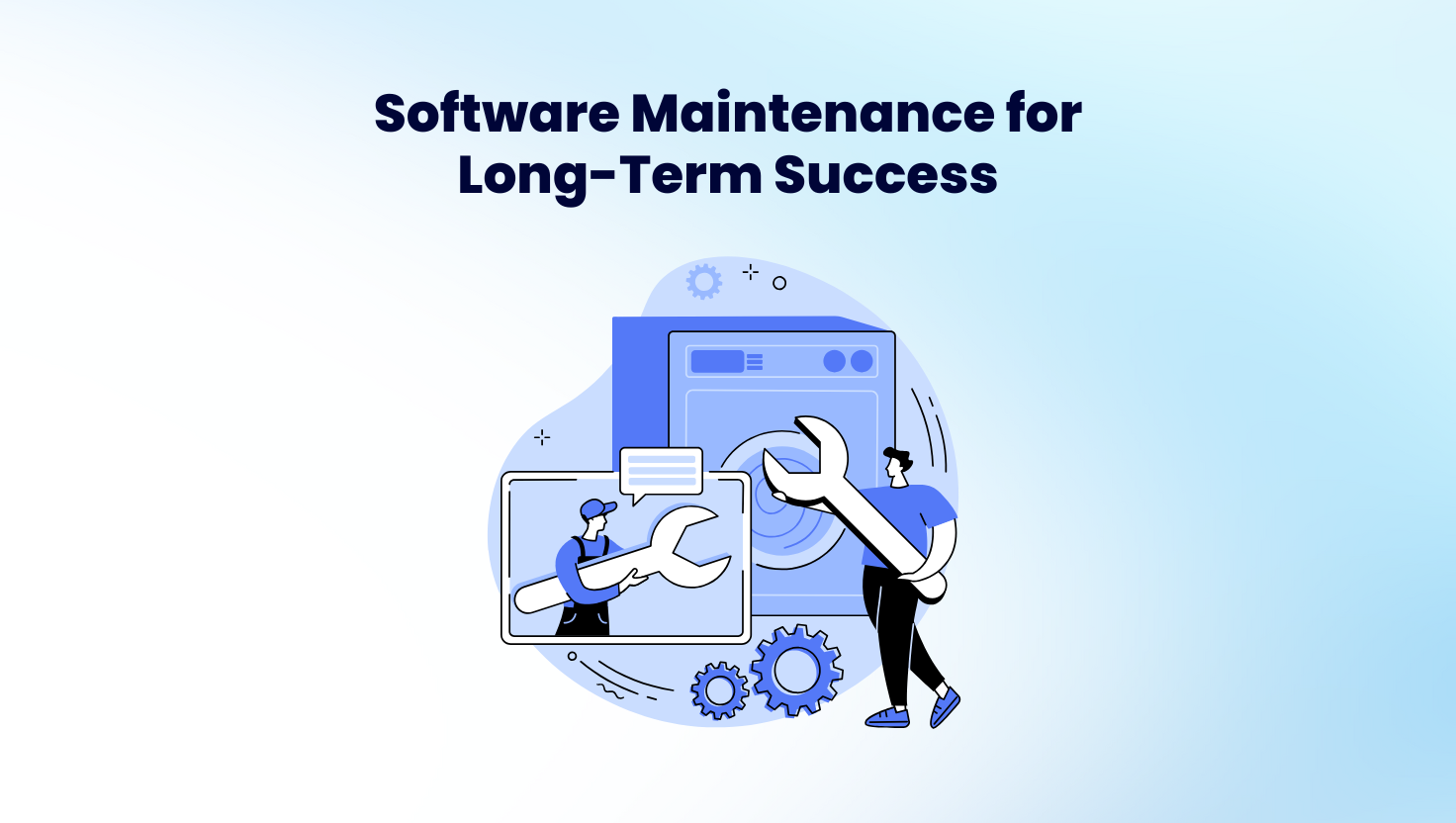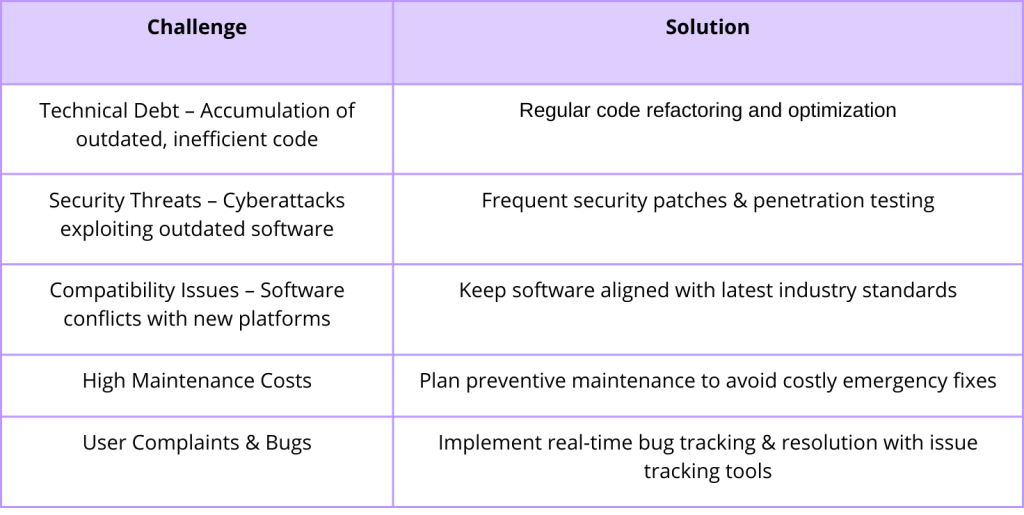
07 Mar How to Handle Software Maintenance for Long-Term Success
Software plays a critical role in business operations, but maintaining it effectively is often overlooked. Without proper maintenance, software can become outdated, inefficient, and vulnerable to cyber threats. Regular updates, security patches, and performance optimizations are crucial to ensuring that applications remain functional, secure, and scalable over time.
This article explores the importance of software maintenance, the types of maintenance needed, common challenges, and best practices for achieving long-term software success.
Why Software Maintenance is Essential
Maintaining software is not just about fixing bugs—it’s about ensuring that it continues to meet business needs, stays secure, and performs efficiently. Here’s why software maintenance is critical:
1. Security Risks and Vulnerabilities
Unpatched software is a prime target for cybercriminals. Regular updates help close security loopholes and prevent data breaches, malware infections, and system hacks.
2. Performance Optimization
Over time, software can slow down due to inefficient code, outdated libraries, or system conflicts. Maintenance helps optimize performance, reduce load times, and improve overall efficiency.
3. Compatibility with New Technologies
As hardware, operating systems, and third-party services evolve, software needs updates to remain compatible. Without maintenance, applications may stop functioning correctly.
4. Cost Savings in the Long Run
Proactively maintaining software is far cheaper than waiting until a major failure occurs. Preventive maintenance helps businesses avoid costly downtime and emergency repairs.
5. Improved User Experience
Regular maintenance ensures that software is reliable, fast, and user-friendly, leading to higher user satisfaction, better engagement, and increased productivity.
Types of Software Maintenance
Different types of maintenance are required depending on the software’s needs and challenges:
1. Corrective Maintenance
Fixing bugs, crashes, or errors that impact software functionality.
2. Preventive Maintenance
Identifying potential issues before they cause failures to keep the system stable and secure.
3. Adaptive Maintenance
Updating software to remain compatible with new operating systems, hardware, or regulatory requirements.
4. Perfective Maintenance
Enhancing usability, adding new features, and improving performance based on user feedback.
Best Practices for Long-Term Software Maintenance
To ensure software remains reliable and efficient, businesses should implement the following best practices:
1. Regular Security Patching & Updates
- Apply security patches to prevent vulnerabilities.
- Update third-party dependencies to their latest versions.
- Conduct penetration testing to identify weaknesses.
2. Optimize Performance Continuously
- Monitor server response times and system logs.
- Refactor inefficient code to improve speed.
- Optimize database queries and reduce bottlenecks.
3. Implement Proper Documentation
- Maintain clear documentation for code, system architecture, and update logs.
- Use version control systems like Git to track changes.
- Ensure all maintenance tasks are well-documented for future developers.
4. Automate Maintenance Processes
- Use continuous integration/continuous deployment (CI/CD) pipelines.
- Automate code testing, updates, and backups.
- Monitor error logs and performance metrics in real time.
5. Collect and Analyze User Feedback
- Monitor customer support tickets and bug reports.
- Conduct A/B testing to evaluate new features.
- Adjust the software based on user behavior and analytics.
Common Challenges in Software Maintenance
Even with a structured maintenance strategy, businesses often face challenges such as:

Addressing these challenges early helps businesses avoid disruptions and ensure software longevity.
How PT KDN Supports Software Maintenance
At PT KDN, we specialize in comprehensive software maintenance solutions to keep applications running smoothly, securely, and efficiently. Our services include:
- 24/7 monitoring to detect and resolve issues proactively.
- Performance optimization to maintain software speed and reliability.
- Security enhancements to prevent cyber threats and data breaches.
- Feature upgrades and compatibility updates to support business growth.
With PT KDN, businesses can focus on innovation while we handle maintenance and optimizations.
Proactive vs. Reactive Software Maintenance
Many businesses wait until something breaks before performing maintenance, leading to higher costs and system downtime. A proactive approach ensures that issues are resolved before they become major problems.

Choosing a proactive maintenance approach helps businesses avoid expensive breakdowns and keep software running smoothly.
How to Plan an Effective Software Maintenance Strategy
1. Conduct Regular System Audits
- Analyze system logs, performance, and vulnerabilities.
- Identify areas where efficiency can be improved.
2. Establish a Maintenance Schedule
- Implement monthly security updates.
- Perform quarterly performance optimizations.
3. Utilize Cloud-Based Infrastructure
- Cloud-based software is easier to maintain and scale.
- Automatic cloud updates help reduce maintenance efforts.
4. Train Development Teams
- Keep teams updated on new programming frameworks and best practices.
- Encourage knowledge sharing to reduce dependency on specific developers.
5. Partner with a Reliable Software Maintenance Provider
- A trusted partner like PT. KDN ensures ongoing support and long-term stability.
- Outsourcing maintenance reduces operational overhead.
Conclusion
Effective software maintenance is essential for security, performance, and long-term sustainability. By adopting proactive strategies, businesses can reduce technical debt, prevent security risks, and optimize software efficiency.
PT KDN provides tailored solutions to keep your software running smoothly and securely. Contact us today to ensure your software remains an asset, not a liability.


Sorry, the comment form is closed at this time.